Simulating Crop Productivity in a Triple Rotation in the Semi‑arid Area of the Aral Sea Basin

Authors:
Farmers face increased risks and vulnerability to the effects of climate change and land degradation on crop production due to the lack of information and impact assessment. This is especially true in the Khorezm, an irrigated agricultural region near the Aral Sea Basin (Uzbekistan) which represents eight million of irrigated land in Central Asia. Water scarcity requires research and introduction of alternative crops into a common winter wheat–cotton rotation. Mung bean (Vigna radiata) is considered as a drought-tolerant crop that could be implemented in Khorezm and other similar drought prone areas. The main objective of this study was modeling the triple rotation sequenced the winter wheat (WW), summer mung bean (MB) and cotton (C) as a single cropping system. Specific objectives were to (1) update the parameterization of the irrigated winter wheat and cotton modules in CropSyst to identify the key variables impacting the triple rotation (WW–MB–C) on overall crop yield; (2) to parameterize and validate the developed (CropSyst-based) model using controlled triple rotation data and (3) carry out scenario analyses to capture the influence of soil fertility levels and irrigation water shortage on crops growth, development and yields. The results revealed, for the first time, the impact of different soil-ecological factors such as high soil fertility (HSF) and low soil fertility (LSF) varying levels of irrigation water availability on crops in the triple crop rotation. Compared to LSF simulated yields of winter wheat and cotton under HSF were increased with 0.58 Mg ha−1 for WW grain and 0.21 Mg ha−1 for cotton while mung bean grain yields were not affected by different soil fertility levels.
Scenario analyses showed the possibility of reduced (by 20%) irrigation for triple crop without the effect on yield. However, compared to full irrigation scenario, reduction of irrigation for 40 and 60% could decrease the rotation crops yields up to 33% and 40%, respectively. The developed model could be useful to increase the understanding of the nexus of food, energy and water in Khorezm and comparable regions of Central Asia, and to inform decision-making about sustainable use of available water resources.
